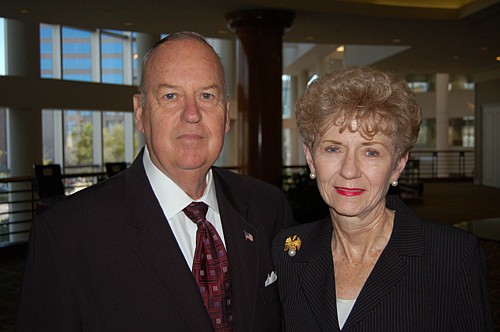
by Max Marbut
Staff Writer
With headlines detailing the plight of the St. Johns River with pollution, algae blooms and fish kills, it’s easy to wish for a return to a time when those things weren’t issues.
While returning to those days isn’t possible, a look back is on exhibit in the Loft Gallery at the Museum of Science & History on the Southbank.
The exhibit shows what life was like for people who lived on the river 1,000 years ago. “People of the St. Johns” includes artifacts from the museum’s permanent collection never before displayed and others on loan from the Archaeology Department of the University of North Florida.
“A lot of people aren’t aware we have an Archaeology Department at UNF,” said professor Keith Ashley, the guest curator for the exhibit.
The artifacts are from two North Florida locations, the Mayport Mound and the Shields Mound, which are near Fort Caroline. Ashley said the sites are particularly important from a scientific standpoint.
“They reveal the Native American history of Jacksonville from the time period of about 1000 A.D. As a researcher, I think that’s the most significant period,” said Ashley.
Based on the analysis of the pottery fragments, bone carvings and some things that aren’t found naturally anywhere near this part of the country, Ashley said the antiquities prove that North Florida’s native people of that time communicated and traded with other Native Americans on the East Coast and halfway across the continent.
“They were bringing in copper and sending out shells. There’s more copper at the Shields site than at any other site in Florida. Tests determined some of it came from the Appalachians and some was from the Great Lakes area,” said Ashley. “It changed the way we viewed local Native Americans.”
The exhibit is not specifically aimed at younger museum guests. It’s more along the lines of what you’d find at a traditional natural history museum and that’s part of the plan, said MOSH Curator Christy Leonard.
”We’re expanding our audience and this exhibit appeals to everyone in North Florida. It’s our ancient history,” she added.
On the first floor of the museum there is an exhibit of paintings of North Florida Native Americans by St. Augustine artist Theodore Morris. The figures depicted are from about 1500 A.D., around the time French explorer Jean Ribault sailed into the St. Johns River and landed at what is now called Arlington.
MOSH will mark a milestone for a living former resident of the St. Johns River June 10. That’s when Tonca, the museum’s alligator snapping turtle, turns 10 years old. The celebration and annual weigh-in is 10 a.m.-2 p.m.
MOSH is also offering a summer admission discount. On Fridays through Aug. 27, admission is $5 per person and the museum will be open until 8 p.m.
For more information about programs and exhibits, visit www.themosh.org.

These pottery fragments are about 1,000 years old.

“The Fisherman” by Theodore Morris.

North Florida’s Native Americans used whatever was available to make simple tools.

“Bobcat Clan” by Theodore Morris.
356-2466